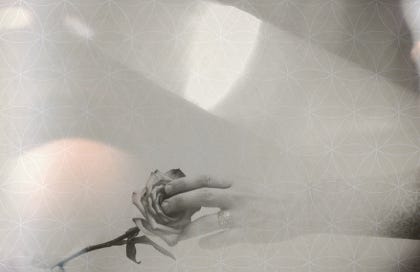The Truth About Looking (and Feeling) Good Naked
Reflections on the Art of Exercise Design, Pt 1
I’ve done thousands of client intakes, and the conversation almost always starts the same way.
I ask, “What are your goals? Why are you looking for support in your fitness journey?”
And they give me the standard responses:
“I just want to be healthy.”
“I want to feel better in my body.”
“I think I’d have more energy.”
These are true, and good, but often not the whole story. Often, at some point, I cut through it and ask, “Do you want to look and feel better when you’re naked?”
And every time I ask this, they light up and say, “Yes.”
It’s a moment of relief. They finally have permission to say what they’ve really been thinking without feeling shallow or vain. Like it’s okay to want that.
Because it is ok to want that.
Many people feel like they have to say the right thing, to justify stepping into a new relationship with their body, one that reforms its shape and size and weight. But the truth is, wanting to look and feel better naked—wanting to feel confident, beautiful, strong, and at home in your own skin—is not vain. And it’s not about meeting anyone else’s standards of beauty—it’s about feeling like yourself, in the body you live in, with a sense of comfort and confidence that is truly yours.
This is about your relationship with the foundation of your life. It’s about embodiment. And if we’re being honest, it’s about freedom—freedom to take your clothes off without hesitation, freedom to feel comfortable in your skin, freedom to feel pleasure alone and with others, freedom to move without restriction. And freedom from the insecurities that fester inside of us in a culture that depends on our low self esteem to sell us everything we don’t need.
I often say that there is no reason for a fitness magazine to have more than one issue. No reason, that is, but capitalism. The fundamentals of effective exercise design don’t change, and they’re not that complicated. But publishers and advertisers want you confused and searching and disoriented by conflicting information and whatever fad is selling best at the moment. This is ridiculous, but it’s where we are.
This is why so many people feel like they’re always failing—because the goalposts are constantly shifting. But perfection is an illusion, created and sustained by capitalism. The truth is, there is no ‘final version’ of your body to achieve—there’s only the relationship you have with it. And that relationship should be one of respect, intelligence, and care, not punishment or self-rejection.
Stepping into a more empowered, informed, and pleasurable relationship with your body is a vitally important foundation for mental health, creative living, and relational wellbeing. It creates a strong, rooted foundation from which you can bring confident discernment to your relationships, your life choices, and how you use your time and energy.
The Problem: Fitness Culture is Brutal–And Inefficient
Many people assume that because their workouts are miserable, painful, and outside their comfort zone, they must be getting results. But pain is not a training strategy. And suffering does not guarantee progress. Some people, like my wife, have had this experience, feel this intuitively, and that leads them to avoid exercise entirely for years or even decades because they refuse to enter into an abusive relationship with their bodies.
Most trainers aren’t actually structuring training for results. They rely on exhaustion, random circuits, and pushing people past their limits—without any actual exercise design or or strategy for progression.
And here’s the real problem: most personal trainers have no real education in exercise science.
As I’ve mentioned in past essays, you need far more training and higher credentials to cut someone’s hair than to work with their body as a personal trainer—and only one of those professions causes lasting injury on a daily basis.
The truth is, there is another way—one that gets better, more efficient, and longer-lasting results without breaking your body down in the process.
And that requires a complete rethinking of how we train.
The real secret to looking and feeling good naked—and keeping your body strong for life—doesn’t come from doing more. It comes from doing the right things, in the right order, with the right structure. It comes from integrating the best technical training principles with an approach that actually works with your body instead of against it.
This is where my background comes in. I hold a Master’s in Exercise Science, which means I’ve been trained at the highest level in how to create precise, scientifically-backed training programs. Most of us with this level of education work in elite sports facilities, hospitals, or human performance labs—not one-on-one with the general public.
And that’s exactly why I do what I do.
I’m here to democratize the highest-quality information—so that you don’t just get random workouts designed to make you sweat, leave you unnecessarily sore, or break you down without purpose, but a fundamentally smarter, multidimensional approach to movement. One that integrates exercise science, somatic healing, and a longevity-focused way of training.
Because the goal isn’t just to push harder. The goal is to train in a way that works with your body’s intelligence, gets better results, and sets you up for decades of strength, mobility, and confidence.
That’s what this is about.
Aesthetics in Exercise Design
Aesthetics in physical training isn’t just about looking good—it’s about moving well, feeling strong, and building a body that feels as good as it looks.
Think of a rose. Its beauty isn’t just in its petals or its size—it’s in its balanced structure. Each petal unfolds with precision, layering seamlessly over the next, creating perfect harmony. Its stem stands firm, strong enough to support the bloom, yet flexible enough to bend with the wind. When a rose grows wild, it loses its symmetry. When it’s restricted, it never fully blossoms into what it was meant to be.



The body is no different.
At its core, aesthetics in the context of exercise science is about three things:
Proportion – The balance of size, shape, and symmetry that creates a natural flow between muscle groups.
Fluidity – The way a body moves, not just how it looks in stillness. Aesthetic training isn’t just about standing poses—it’s about how you carry yourself, how effortlessly and efficiently your muscles activate, and how well you integrate strength into real movement.
Longevity – Strength and beauty that last. The goal isn’t quick and unsustainable weight loss for a special event, burning yourself out by overworking your system, and repeating the cycle in a yo-yo pattern for the rest of your life. It’s to build a life of thriving, with a body that remains strong, capable, and mobile for decades.
And yet, somehow, aesthetics has been dismissed as shallow or vain.
This is ridiculous. Beauty matters.
At some point, I’ll probably co-author something with
about how our hyper-masculine culture simultaneously devalues beauty while manipulating us with it—exploiting our fundamental drive toward aesthetics while shaming us for caring about it. But that’s a conversation for another time.When you train for aesthetics in the right way—not through punishment, but through intention and precision—it’s not just about muscles.
It’s about self-image.
Self-image affects everything—your posture, your confidence, your mental well-being, the way you interact with others, every single choice you make. Self-image isn’t just about how you look—it’s about the stories you tell yourself about who you are. But so much of that messaging is tied to our physical form—from the traumas and patterns stored in our fascia to the thoughts that surface every time we catch our reflection in the mirror.
Transforming your self-image to be empowered, authentic, and genuinely joyful is possible.
And I’ll be the first to tell you that it requires working with more than just the physical dimension of your life. But I’ll also be the first to remind you that your body is the foundation of your life—and when you train in a mindful, multidimensional way, you’re not just shaping your body.
You’re reshaping the entire trajectory of your life.
You Deserve to Look and Feel Incredible in Your Body
This isn’t about chasing some impossible ideal or punishing yourself into submission.
Looking and feeling good naked is about freedom—freedom to move well, to take up space with confidence, to stand fully in your own skin with ease, not because your body has changed, but because your relationship to it has.
It’s about building a body that moves as well as it looks, that carries you through life with ease and power, that reflects the care, strength, and self-respect you cultivate within yourself.
And that starts with how you train.
Because when you shift from random effort to intelligent design, when you move from force to awareness, when you train with precision, efficiency, and longevity in mind, you don’t just get results—you get lasting transformation.
This isn’t about looking a certain way. It’s not about shrinking yourself to fit someone else’s idea of what your body should be. It’s about knowing that your body—exactly as it is—deserves to move well, to feel strong and beautiful, to be pain-free, and to carry you through life in a way that supports your freedom and peace of mind.
It’s about moving from a place of care, not shame. From intention, not punishment. And when you train with that perspective, the results last—because they’re rooted in something deeper than aesthetics alone.
Your Body Is a Temple—And It’s Time to Honor It
You don’t need more confusion, conflicting advice, or workouts designed to exhaust you without purpose. You need an approach that actually works—one that builds strength, fluidity, and confidence in a way that lasts.
That’s exactly why I created Your Body Is a Temple: The Art of Somatic Awareness and Exercise Design—a free workshop designed to cut through the noise and give you the tools to train with intelligence, efficiency, and longevity in mind.
Because your body deserves more than guesswork. It deserves a relationship rooted in clarity, precision, and deep respect.
Join me in this workshop, and let’s rethink movement together.
And if you’re looking for something more personal, I am onboarding a limited number of clients at a discounted rate in my new coaching program Steady Strength. For those interested, I am happy to meet for a free 30-minute consultation where we can explore your goals and how I can support your journey toward regenerative, multidimensional thriving.
I’d love to connect with you.
🖖✨🐌,
Seth!






Thank you for this ! And really looking forward to your workshop next Sunday!